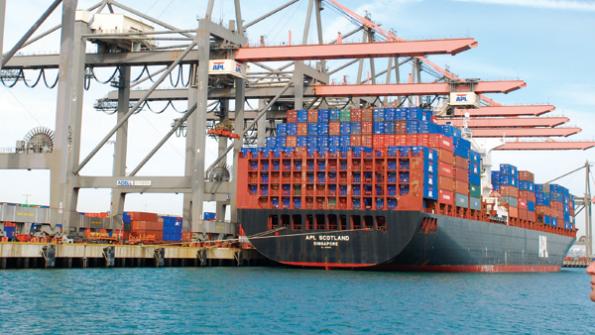February 28, 2012

It has been 40 years since the Russian wheat deal shook up the U.S. commodity market, and since then producers of both grains and meats have become increasingly interested in and reliant upon the export market for adding value to their commodities. In recent years growing economies have transformed developing countries into major consumers, and many of those have great impact on the value of U.S. farm products as well as the supply available to U.S. consumers. Many of the international trade issues were brought to the table this past week at the USDA’s annual Outlook Forum.
China
William Westman, Vice President for International Trade, with the American Meat Institute, in Washington, said China is challenged with its efforts to feed over 1 billion people without the resources it needs to achieve that. Sixty-six percent of China’s land is a dry savanna, mountains or a non-farmable desert. In addition to 13% of the country that is cultivated, 21% is in forest. Even between sidewalks and buildings in large cities, there are efforts to grow corn. Over the past 25 years, there has been progress made in increasing crop yields. Corn yields have increased from about 57 to 83 bu./acre. Soybean yields have increased only from 24 to 27 bu./acre.
China needs improved grain and oilseed production to feed to livestock, which is a priority for the government. Fifty-one percent of the farms have less than 100 head of hogs being marketed, and that number is declining. Forty-nine percent of pork farms have more than 100 head and their number is increasing.
Consumers are increasing, particularly the middle class. When China became part of the international trading community in 2002, the number of households has increased from 50 million to just over 100 million today, with a prediction of 225 million by 2023. And they are eating out more often as the economy grows. Just 15 years ago, Chinese consumers spent 100 billion Yuan on food services, but increased to 1,800 Yuan in 2009. That was equal to the amount spent by Japanese consumers and half the amount spent by U.S. consumers on eating out. 2010 data indicated a 15-20% growth rate.
Westman indicated the increasing consumer demand is pointing to the need for food, but the Chinese infrastructure will have challenges in meeting the demand. Much of it may fall upon the U.S., not only for meat products, but for feed grains needed by Chinese livestock producers.
Russia
In Russia and the states of the Former Soviet Union, Eric Trachtenberg of McLarty Associates, reported to the Outlook Forum that the national food system collapsed when subsidies ended and agriculture faced the reality of the marketplace. Production fell 40% after 1991, and the livestock industry was in decline. Food aid for consumers was needed for half of the 1990s. However, after price controls were ended and the ruble devalued, private sector expansion has taken over 75% of the Russian economy. In the past year, agricultural output grew by more than 16%, helped by abundant supplies of land, water, cheap energy and growing investments in machinery to produce food.
Even with increased capacity for food production, Russian food imports doubled from 2005 to 2011, with more than $1.3 billion purchased from the U.S., including red meats and poultry, livestock genetics, soybeans and a variety of other products. Currently Russia is the fifth-largest beef market for the U.S. and the sixth-largest pork market.
So far Russia has traded outside the World Trade Organization, but that will end in August, following WTO acceptance last December. Duties that Russia imposes will decline from an average of 10% to just under 8%. The tariff on soybeans will drop to zero and the tariff on soybean meal will decline to 2.5% within a year. The tariff on pork will drop to 25% by 2020.
Russian restrictions on incoming products must be limited to sound science, under terms of the trade agreement. U.S. poultry products will be allowed, along with biotech products, US food safety rules must be accepted, and special licensing requirements must be reduced or eliminated. Quotas on imported pork, beef, and poultry are being raised or eliminated.
Trachtenberg said the opening of the Russian market offers many opportunities for increased US agricultural products, particularly with 142 million people, and great economic growth around cities. He said there are opportunities for companies selling animal genetics, since it is currently a $58 million market for livestock, and it is already the fourth-largest market for U.S. farm equipment makers.
However, there will be challenges imposed by some technical standards, such as plant and animal health, protections against dumping and limited protection for intellectual property and branding. Trachtenberg also said there will be strong competition from local producers in Russia, along with Ukraine and Kazakhstan, and the European Union. And an older US law that targeted the Soviet Union and disallowed free trade, needs to be amended to allow normal trade relations. But he also said Russian commerce is also full of corruption, currency, and economic volatility.
Summary
The growth of developing country economies, such as in China and Russia, afford many opportunities for US agriculture. Consumers have money and want better food, and in some cases trade is more free and open than in prior years. However, there are still many hurdles, both in trade rules and governmental policies, and successful trade will come with high amounts of risk.
You May Also Like




